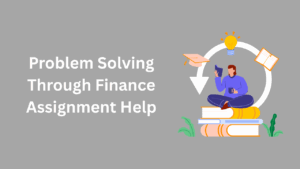Juggling lectures, textbooks, and deadlines can overwhelm even the most organized students. When stress peaks, some search for “pay someone to do an assignment” to lighten their load. While outsourcing offers temporary relief, strong note-taking skills build lasting academic independence.
Others seek assignment writing help to polish essays or structure reports. But mastering how you capture and process information transforms how you learn. It turns chaotic lectures into clear, actionable insights.
Note-taking strategies students use vary widely from bullet points to mind maps. Finding methods that align with your learning style and course demands is key. Experimentation is essential. Similarly, effective note-taking techniques aren’t one-size-fits-all. A biology student might prioritize diagrams, while a law student focuses on case summaries. Adapt your approach to each subject and professor’s teaching style.
Why Note-Taking Matters More Than You Think
Notes aren’t just memory aids they’re active learning tools. Processing information as you write boosts retention and critical thinking.
The Encoding Effect
Writing notes by hand (vs. typing) engages motor memory, enhancing recall. Students who handwrite often remember concepts longer, even if they type later.
Prevents Passive Learning
Listening without note-taking lets information slip away. Summarizing key points forces engagement, helping you spot gaps in understanding.
Top Note-Taking Methods to Try Today
Different scenarios call for different strategies. Rotate these based on subject or lecture format.
The Cornell Method
Divide your page into three sections:
- Cues (Left Column): Key terms or questions.
- Notes (Right Column): Detailed explanations.
- Summary (Bottom): Condensed takeaways post-lecture.
Ideal for dense subjects like history or philosophy.
Mind Mapping
Start with a central topic (e.g., “Photosynthesis”), then branch into subtopics (light reactions, Calvin cycle). Use colours and arrows to show connections. Perfect for visual learners tackling complex systems.
Outline Method
Organize notes hierarchically with bullet points:
- Main Topic
- Subtopic
- Detail
- Example
Works well for structured lectures with clear headings, like business or engineering.
Digital vs. Analog: Choosing Your Tools
Your tools should enhance, not hinder, your process.
Apps for Digital Note-Takers
- Notion: Organize notes, tasks, and calendars in one space.
- OneNote: Draw, type, or record audio notes synced across devices.
- Evernote: Scan handwritten notes and make them searchable.
Analog Advantages
- Less Distraction: No notifications popping up.
- Flexibility: Sketch diagrams or equations quickly.
- Memory Boost: Handwriting’s physicality aids retention.
Tips for Effective Lecture Notes
Professors drop hints about exam topics and catch them with these tactics.
Pre-Lecture Prep
- Skim the assigned readings to identify key themes.
- Note questions you want answered during class.
During the Lecture
- Use abbreviations (e.g., “w/” for “with,” “→” for “leads to”).
- Highlight unknowns with a “?” for later review.
- Record audio (with permission) for tricky sections.
Post-Lecture Polish
- Revise notes within 24 hours to fill gaps.
- Compare with peers to catch missed points.
- Link notes to syllabus topics for exam prep.
Note-Taking for Readings and Research
Textbook chapters and journal articles demand a different approach.
SQ3R Method
- Survey: Skim headings, images, and summaries.
- Question: Turn headings into questions (e.g., “How does osmosis work?”).
- Read: Seek answers to your questions.
- Recite: Summarize sections aloud.
- Review: Revisit notes weekly.
Annotation Strategies
- Marginalia: Jot reactions or links to prior knowledge.
- Highlight Sparingly: Only mark terms you’ll quiz yourself on later.
Avoiding Common Note-Taking Pitfalls
Even good systems fail without awareness of these traps, so recognizing and correcting them is key to effective learning.
-
Writing Too Much
Transcribing lectures verbatim wastes time and clouds key ideas. Focus on main points and examples instead of trying to capture every word. Summarizing information in your own words boosts understanding and recall.
-
Ignoring Review
Notes unused are notes forgotten. Schedule 10-minute daily reviews to reinforce memory and make studying easier before exams. Regular revision prevents last-minute cramming and strengthens long-term retention.
-
Inconsistent Organization
Random formats make exam prep chaotic. Stick to one method per subject or week to keep notes structured and easy to follow. A consistent system helps identify key themes and improves recall when reviewing later.
-
Not Using Visual Aids
Highlighting, underlining, or using diagrams improves retention. Colour-coding different topics can help distinguish key points.
-
Overloading Notes with Irrelevant Details
Avoid copying everything from slides or books. Prioritize concepts that professors emphasize.
-
Failing to Adapt Note-Taking Methods
Different subjects require different approaches. Science may need diagrams, while history benefits from timelines.
When to Seek Help
If note-taking feels overwhelming, seeking support is okay there are many resources available to improve your strategy.
-
Tutoring or Workshops
Many schools offer sessions on study skills. Attend sessions with classmates who achieved perfect grades in related subjects to obtain practical study methods. Participation in such sessions helps students to improve their note-taking methods while also building their self-assurance.
-
Leveraging Tools
Employ Grammarly as your summary editor alongside references to effective note-taking techniques available online. Digital tools improve efficiency by helping students organize their notes better improve clarity and enable more efficient note review. Many apps also offer AI-powered suggestions to refine your notes further.
-
Asking Professors or Teaching Assistants
Instructors can clarify key points and suggest the best ways to take notes for their course.
-
Joining Study Groups
Collaborating with classmates can help identify important details you may have missed. Sharing notes enhances understanding.
-
Practising Active Listening
If note-taking is difficult during lectures, focusing on engagement techniques can help retain more information.
-
Seeking Online Resources
A variety of websites along with video tutorials offer learning materials about note-taking methods that cater to different student learning preferences.
Conclusion
Not all note-taking involves transcribing material since its essence comes from holding essential ideas while structuring and repeatedly examining the content. Three approaches including the Cornell Method together with mind mapping and digital technology enable students to transform their notes into essential learning materials.
The combination of maintaining caution and structural organization with help-seeking support will make notes work as academic success assets past high school into university. The mastery of note-taking through practice and enhancement results in improved learning retention which produces academic accomplishments.
References
Gorospe, M.M.J.M. and Abad, M.L.S., 2023. Note-taking behaviors of high school students. Journal of Multidisciplinary Studies, 3(6), pp.200-211.
BAW. 2020. The Age Of E-Learning. Online Available at:<https://bestassignmentwriter.co.uk/blog/the-age-of-e-learning/> (Accessed: 20 March 2025).





